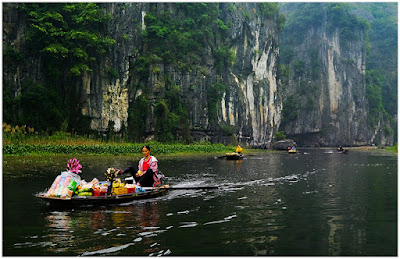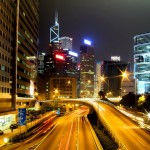Packing for any trip abroad can be a chore. Then add in the task of making sure you have all of the photography bits and pieces you need, and it’s enough to send your head spinning. Thankfully there is a cure for this craziness: The Travel Photography Packing List.

The Packing List is my go-to resource for ensuring I have all the gear I need in order to bring back the best photos. No one wants to deal with dead batteries or a lack of memory cards while they are exploring the world at large. That’s why I use the list below to sooth my packing-frazzled mind and to get on with creating amazing photos.
Camera
I know it seems obvious but the camera is the first thing on my packing list. Why? Because I take time to check it and give it a good cleaning, inside and out, before packing it away. I often carry a spare camera these days, which doesn’t get a lot of action until it is desperately needed.
Packing time is a good opportunity to make sure all cameras are in working order. You might also want to adjust the clock (set it to the time zone you’ll be traveling to) on your camera(s) so you can hit the ground running.

Lenses
Lens choice is a dilemma for most of us. Bring them all and suffer the back strain of having to lug them around, or bring just a few and worry about missing the shot? As individual as this choice can be, I suggest thinking about what you will shoot the most if you want to limit the number of lenses you take along. Also, ask other photographers who have traveled where you are going or your tour operator for suggestions.
On my own tours, where our focus is on people, nature, and wildlife photography, I suggest a 24-105mm lens for walking around and city photos. These lenses are great for a variety of situations from close to medium distance.
Then for the landscape shots, a wide-angle or wide zoom, like a 16-35mm lens or 10-22mm on a crop sensor camera, can work wonders.

All-in-one lenses
My go-to lens for travel is the venerable Canon 28-300mm L-series Lens. It covers a huge range and with some panorama stitching, I can get mildly wide-angle shots without switching lenses. It’s a heavy lens indeed, but I’ve grown used to it. I will then bring a 10-22mm wide-angle for the monumental landscape shots I love to capture.
Optionally, a long lens may be needed in certain situations, but they can be cumbersome. For instance, I would not have gone to Panama and Costa Rica, lands rich in birds and wildlife, without a Sigma 150-600mm Sport lens. Yet, that same lens will not follow me to the Himalayas, where weight is certainly a factor and the chance for birds is lessened.
A Flash or Speedlight
For all my travels in the past decade, I have rarely found myself wanting to have a strobe along for the ride, especially due to the added weight involved. Yet I still tend to bring just one flash and I have been happy every time I did.

What I have found valuable when bringing a strobe is to make sure it is one that I can use off-camera. A flash that can be remotely triggered either with a tether or a smaller unit on the camera (either the built-in flash or a unit that attaches to the hotshoe). This has allowed me the greatest flexibility to add well-directed light to my travel photos.
Tripod
A good travel tripod is a thing of beauty. These units, built for packability and lightweight, have been following me on more and more trips abroad.
My main issue with packing a full-size tripod, even if it is carbon fiber, is the need to take larger luggage. The legs of a super sturdy tripod are often longer, even when broken down, than the luggage I wish to take.

It’s a balancing act and it matters what you intend to shoot. If you have space, bring the monster tripod, especially if you are accustomed to hauling it around with you near home. If you have limited space, but still want stability in your landscape or astrophotography shots, consider something along the lines of the MeFOTO Globetrotter. It packs small, can double as a monopod and has a fully functional ball head.
Power Strip
Power strips are great for travel and there are a variety of options. I prefer a brand where the cord is easy to store and the strip comes with two USB ports. The two outlets in the power strip are meant for a variety of international plugs so it’s easy to share when you find the outlet at the airport overloaded. I’ve done this more than once and was able to get a charge when I couldn’t have without a power strip.

WARNING: See the next section about converters because it’s important to make sure the power strip is set up for universal power. I once had a strip with USB ports go, “Pop!” and puff smoke arose when I didn’t realize it was only set for US power and I was using it in India. Know before you go!
Chargers, Adapters, and Converters
Almost any charger from a major manufacturer these days will work on what’s known as “Universal Power”. They have an input range that straddles 110V-240V and 50Mhz-60Mhz. This fits almost any AC power around the world. If your charger is not set up for Universal Power (check the charger itself for those phrases above printed somewhere on its label), then you need a converter.
A converter will change the power coming out of the wall in your hotel to the power your charger needs. This stops things from literally catching fire.

Different than a converter is an adapter. All it does is makes the plug on your charger fit the wall socket in your hotel. There is a handy guide on the Internet that lists the types of plugs in use around the world, by country, so you can see if your plug will fit.
If not, I’d suggest picking up either a small adapter specific to your host country or a universal adapter that will serve you for almost any country around the world for decades to come.
Memory cards
How many memory cards should you bring? Oh boy, that’s the big question. I’m sure if we ran a poll we’d have a huge range of answers. To help in planning, I take a per diem method and figure out what my average has been on previous trips, per day. I then multiply that by the number of days I’ll be gone to get a total number of photos I estimate that I’ll take over the duration of the trip.
Next, take the total (let’s say 4000 photos) and multiply it by the average size of a photo from your camera. Mine is about 24MB, so for 4000 images, I’d need 96,000MB or roughly 96GB. I then throw in an extra card, just in case. In this example, I will bring four 36GB cards and call it good. Especially if I am going to a country where I know it will be easy to buy more.
If you shoot a lot of videos, you should do the same calculations for video and add the two together.

Lens Cleaning Kit
You can’t get a clear shot with a dirty lens and a proper cleaning is vital. We cover the basics of a simple and portable kit in our article, How Should I Clean My DSLR’s Lens?, and I’d also include a sensor brush if you are comfortable with in-field sensor cleaning.
Filters
Most of us own and carry a circular polarizing filter and they certainly have earned a solid reputation. So throw one in your bag if you are familiar with them.

Next, include a graduated neutral density (GND) filter unless you are proficient at bracketing your shots and merging them artfully in your computer later. A GND helps in situations where there is a large difference between the lighting in a scene. They will slightly darken a sky so it won’t blow out when compared to a darker foreground.
Lastly, I’d suggest a quality neutral density filter, maybe a three or 6-stop.
Shot List
We’ve released shots lists on DPS before and they can be helpful to keep you on track when every single thing you see is new and photo-worthy. A shot list is by no means a dogmatic requirement, but I have found it helpful to bring back a nice variety of shots.
Otherwise, we all tend to slide back into what we like (landscape, food, astrophotography, etc.) and miss out on all the other subjects that make our trip so memorable.
Notebook
For me, a notebook is invaluable for remembering the little things that go with those photos. Maybe you have a mind like a steel trap, in which case you’re blessed, but for the rest of us, by the time day-three rolls around, we can’t really remember little things that happened on day one.

Sure, your photos will help you remember, but they don’t always capture the emotions and conversations you might have had. They are also great for sharing information with strangers, such as writing down the name of a restaurant or attraction you shouldn’t miss.
I fill a couple of pages before my trip with ideas of what I want to see or shoot. It’s then an easy reference later when I’m feeling rudderless and need some direction.
Your List
I hope this gives you a good start the next time you make a packing list for a trip. It’s not meant to be exhaustive so I would love to hear what else you have on your list. Leave a comment below so others can benefit from your experience with travel photography.
The post Tips for Making Your Travel Photography Packing List for International Trips by Peter West Carey appeared first on Digital Photography School.

Digital Photography School










































You must be logged in to post a comment.